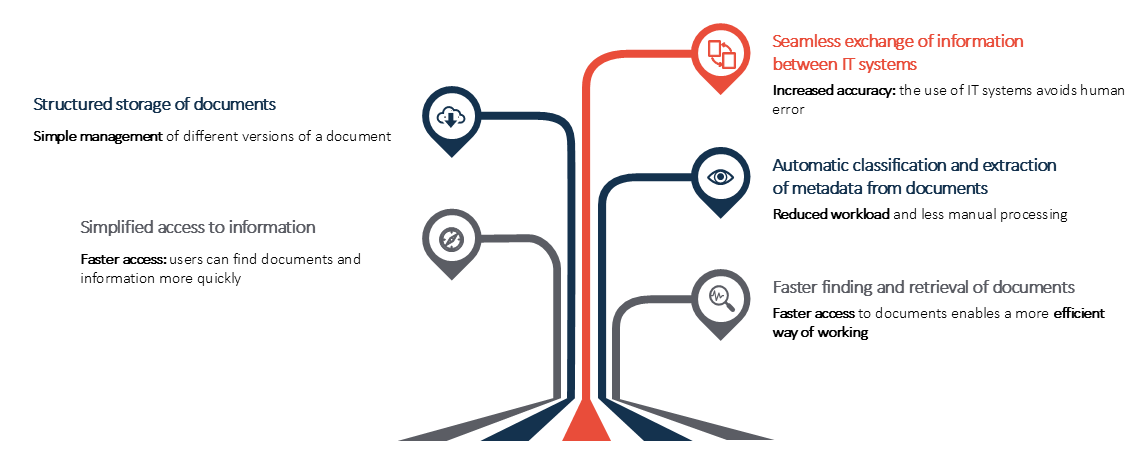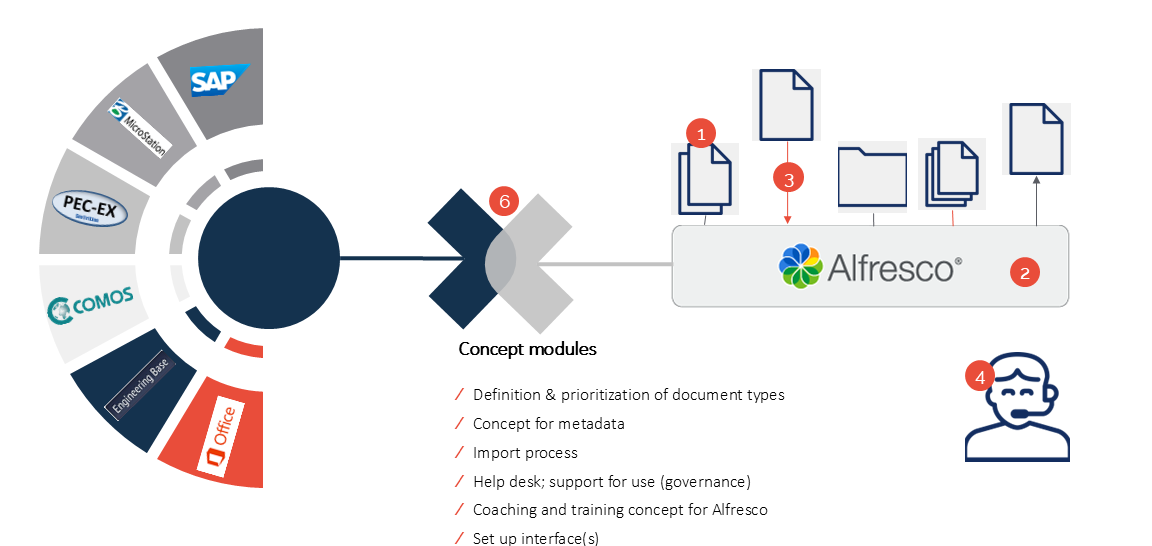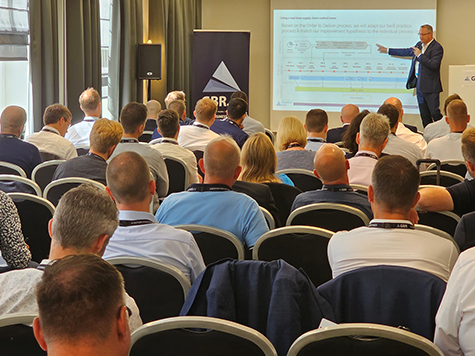
Added value through document management systems in maintenance: a strategic investment in the company's future

Digital transformation is a key success factor in many industries. It plays a particularly important role in maintenance, as technical systems must be kept reliable and ready for long-term operation. Digital document management systems (DMS) offer considerable added value here by creating transparency, automating processes, reducing costs and increasing productivity.
The need for a DMS in maintenance
Modern maintenance processes are confronted with a wide range of requirements. Companies must always have technical documentation to hand and comply with strict legal requirements.
Traditional approaches, such as filing in folders, manual file management or locally stored documents, are inefficient and cause long search times, incorrect decisions and compliance risks. Studies show that 80% of companies suffer significant efficiency losses due to unstructured document management.
A DMS offers the solution: it structures documents systematically, enables quick access to relevant information and ensures that all team members always work with the latest versions. These factors contribute significantly to increasing efficiency and quality.

The advantages of a document management system (DMS)
Faster finding and retrieval of documents
A DMS significantly reduces the time spent searching for documents. Systematic categorization, keyword searches and automated processes can save companies time and money.
According to a recent study, employees spend up to 30% of their working time searching for information. In a medium-sized company with 50 maintenance engineers, the daily search time was reduced from around 25 to less than 5 hours thanks to a DMS. This amounts to an annual cost saving of over 150,000 euros, while at the same time increasing productivity.
Automatic classification and extraction of metadata
A central function of modern DMS is the automatic classification and extraction of metadata. Optical Character Recognition (OCR) can be used to extract text from scanned documents and convert it into searchable formats. Functions such as advanced search mechanisms, version control and workflow automation enable seamless integration into existing processes.
Current research results show that companies with automated document processes achieve a 40% faster processing speed.
Smooth exchange of information between IT systems
A DMS ensures smooth communication between different IT systems such as SAP, MicroStation or Office applications, facilitating quick and uncomplicated access to the required data and preventing redundant or outdated documents.
Seamless integration not only increases efficiency, but also reduces sources of error and improves collaboration between different teams. A meta-study shows that companies with integrated DMS IT systems have a 25% higher working speed.

Minimization of errors and compliance risks
Errors in maintenance - whether due to incorrectly installed components or inadequate documentation - can result in high costs. A DMS minimizes these risks through automated versioning, central document management and simple proof of compliance with regulations.
In regulated sectors such as aerospace, healthcare or the chemical industry, a DMS can help to reliably meet legal requirements. According to a scientific study, companies with DMS reduced the number of compliance violations by 60%.
Challenges when introducing a DMS
The introduction of a document management system brings numerous advantages, but can also be associated with challenges. The most common obstacles include:
- Acceptance and employee training: A new system often requires a change in working habits. Early involvement of employees and targeted training are crucial for success.
- Data migration: Transferring existing analog and digital documents to the new system is a complex process that requires careful planning.
- System integration: A DMS must be seamlessly integrated into existing IT infrastructures to ensure smooth processes.
- Data security and data protection: Compliance with legal requirements (e.g. GDPR) and the protection of sensitive company data must be guaranteed.
- With the right strategy and an experienced partner, these challenges can be overcome and long-term added value achieved.
Outlook: Intelligent DMS and chatbots - the next step towards smart maintenance
A promising development step lies in the combination of intelligent DMS with chatbot technologies, especially those based on Large Language Models (LLMs) .
The DMS is not only used as a structured document repository, but is also actively accessed by a chatbot, which has access to the plant documentation and maintenance order data. In pilot projects chatbots were fed with the relevant document information and maintenance data. Employees can use natural dialog to ask questions such as:
"What maintenance work was carried out on pump 3 in the last quarter?"
"Show me the current operating instructions for compressor XY."
The chatbot accesses the DMS content in a context-sensitive manner and provides precise answers in a matter of seconds, without users having to know the folder structure or file names. This lowers the barriers to entry, speeds up processes and enables users with less document management experience to easily access important information.
This integration of DMS and generative AI represents a genuine paradigm shift - away from passive management and towards active, intelligent knowledge management in maintenance.




